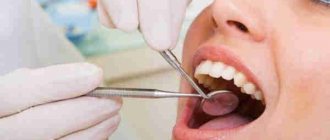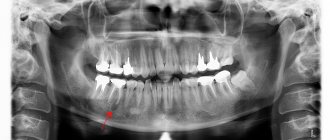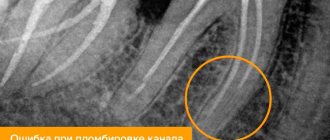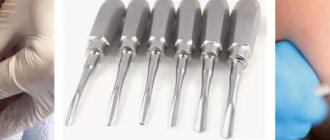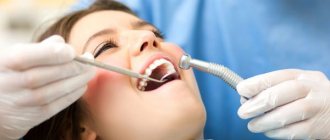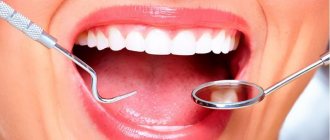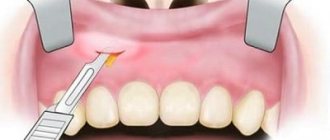August 18, 2017
Tooth extraction is an unpleasant, painful and even frightening procedure. But it seems so only to the patient - for a dental surgeon this is a completely ordinary, everyday and ordinary operation. UltraSmile . ru offers to see what tools the dentist uses to remove teeth. You can also find out ways to restore teeth>>>
Forceps
This is the main device that helps pull the tooth out of the socket. The doctor literally grabs the tooth with forceps and begins to swing it, which leads to the destruction of the ligaments holding the root. Next, the dentist carefully removes the tooth along with the root, again using forceps. The device looks, of course, scary, but not a single dental surgeon can do without forceps. It is noteworthy that such a seemingly simple tool is available in many variations: with inclined, thick or thin, with rounded or even flat nippers (or, in scientific terms, cheeks).
Dental forceps
Tooth root amputation as a treatment
In some cases, complete tooth root removal can be replaced by a tooth-saving operation called amputation. This is the removal of part of the tooth root, allowing you to save a healthy fragment. During the procedure, the affected area is cut off and the cavity is filled with osteoplastic mass.
Tooth-preserving extraction operations also include hemisection, in which part of the root system is removed along with the adjacent crown area. These two methods allow you to preserve the physiological function of the tooth and use it to install a bridge. It is important to understand: no doctor can guarantee that such a tooth will last a long time, since partial loss of the root will lead to a violation of the stability of the tooth. Therefore, if you notice that for a long time after root removal the tooth hurts or causes you other discomfort, you should definitely contact your doctor.
Elevator
When an impacted or unerupted tooth (most often wisdom teeth) needs to be removed, the dentist will use an elevator. The tool consists of a handle and a working part, which is used to extract the root. The elevator operates on the principle of a lever, that is, the doctor literally picks up the tooth from below and removes it from the bone tissue. Removing teeth using elevators is very traumatic, but in some situations you simply cannot do without them.
Elevator for tooth extraction
General overview
The main types of dental surgical instruments include scalpels, curettes, scissors, forceps, elevators, clamps and tweezers.
A dental elevator (or lift - from the Latin Elevator - lifting) is the second most popular surgical instrument after forceps.
It is an oblong (150-160 mm long, 10-20 mm thick) structure, consisting of a working and intermediate part, and a handle. The working part is called “cheeks”.
Elevators are used to remove roots and their fragments, as well as dystopic or damaged teeth that cannot be removed with the main extraction tool - forceps.
During the removal process, the elevator performs the following manipulations:
- The tooth or root being removed is loosened (luxurized - from the Latin Luxatio - displacement).
- They dislocate it, that is, they break the connection of the tooth or root with the periodontal ligament.
- It is completely turned out of the hole or, as a last resort, transferred to a position in which it becomes possible to grasp it with forceps.
Elevators must meet the following requirements:
- Be strong, able to withstand the force applied by the surgeon without breaking or bending. And at the same time light, not causing fatigue in the hand.
- Ergonomic, easy to hold and well balanced.
- Have a non-slip handle.
- Be minimally traumatic to the alveolar bone and soft tissues.
An additional advantage of elevators is color coding, which makes tool selection easier.
Depending on their configuration, lifts have different shapes and technological capabilities.
Their main differences include the following:
- The position of the cheek relative to the intermediate part. The working part can be located on the same line with the intermediate one, or have an inclination relative to it.
- Cheek shape. Characterized by a large number of designs.
Most often, the cheeks have the form of a symmetrical or asymmetrical groove with pointed edges of a rectangular, round or spear-shaped configuration. The width of the cheeks is usually from 3 to 5 mm, but it can be smaller.The pointed part may have serrations that keep the tool from sliding off the fragment being removed.
- The shape of the handle and its position relative to the intermediate part.
The handle can be a continuation of the intermediate part and be in line with it, or located perpendicular to it or at some arbitrary angle.
Elevators are made of alloyed stainless steel, the requirements for which are regulated by GOST 30208-94 and R 50328.1-92.
Examples of steel grades for lifts include 30X13, 20X13, 45X14.
Auxiliary Tools
Forceps and elevators are the main tools of a surgeon. But in addition to them, scissors, scalpels, raspators (thin “spatulas” for separating gums from bone tissue), tweezers, clamps and all kinds of hooks are also used. A chisel (to separate bone tissue and expand the hole if the root is very deep) and a hammer can also be used. Patients are often horrified by the thought of having a chisel manipulated in their mouth, but there is nothing scary about such a procedure. With the right anesthesia, you will not feel anything. In addition, when removing teeth, a drill can also be used - the device will be required if the tooth has several roots and they will need to be separated before removal. This will significantly facilitate the process of extracting the tooth, because the doctor will not extract it entirely, but in parts.
Auxiliary Tools
Indications and contraindications for surgery
Indications
Surgery is necessary if the wisdom tooth:
- Dystopic (the direction of growth is changed towards adjacent teeth, tongue or cheek)
- Impacted (not fully or not fully erupted)
- Has roots that are too long (this may initiate their penetration into the maxillary sinus or fusion with the jaw)
- Caused inflammation of the “hood” of the gums or periodontal tissue (pericoronitis)
- Caused the formation of a follicular cyst, phlegmon, gumboil or fistula
- Destroyed due to the development of caries or other dental disease
- Caused inflammation of the trigeminal nerve
- Became a source of permanent injury to the oral mucosa
- Interferes with the eruption of other molars with a narrow jaw
Absolute contraindications:
- Malignant tumor in the root zone
- Hemangioma (benign formation)
- Serious chronic cardiovascular problems
Relative (temporary) prohibitions:
- Infectious diseases, including those of the oral mucosa
- Having had a heart attack or stroke
- Taking anticoagulants
- Exacerbation of psychoneurological diseases
- Pregnancy and breastfeeding (except for emergency indications)
Laser
The use of laser is one of the greatest achievements of medicine in general and dentistry in particular. In addition to making the dentist’s work easier, the device provides patients with a comfortable procedure and a fairly quick, painless recovery. The laser will not terrify a person, as can happen, for example, with a drill, because it works completely silently.
Laser
In general, in dentistry, lasers are used to treat shallow caries, install implants, treat gums, remove plaque, and even whiten teeth. When applied to the process of tooth extraction, the laser allows for a careful incision of the gums (in this case, the beam stops the capillaries, which means there will be no bleeding and severe trauma to the tissue), a more careful separation of the roots, as well as antiseptic treatment of the wound and restoration of damaged tissue.
Video of wisdom tooth removal using laser
How much does tooth root removal cost?
As a rule, the price for tooth root removal is determined based on the complexity of the case, and can vary greatly depending on the segment of the clinic, the qualifications of the doctor and other factors. Standard removal starts at an average of 3,000 rubles, complex removal will cost at least 5,000 rubles. Your attending physician will help you make more accurate calculations based on the diagnostic results. In any case, the sooner you go to the clinic, the less likely it is that complications will develop, especially since modern dental offices have all the capabilities to carry out the procedure efficiently and minimize the unpleasant consequences of tooth root removal.
Piezo device
Along with a laser, a piezoelectric device is another modern device that makes the dental treatment process more comfortable and safe. The device generates ultrasonic waves that replace a traditional drill. It works almost silently; when removing teeth, it allows you to make incisions in the gums, the teeth themselves, and bone tissue. In this case, the cuts are made using ultrasonic vibrations, and the tip of the device does not come into contact with the surface being treated. Due to this, the tissues are practically not injured, the operation is carried out with high precision even in difficult-to-reach areas.
Piezo device
Possible complications
Any surgical operation, even something as seemingly simple as tooth extraction, can result in complications.
If we talk about the negative consequences of tooth extraction, which are determined by the type of instrument used (in our case, an elevator), then these include the following:
- Injury to the cheek of soft tissues. This is not such a rare case, since the working part of the instrument is sharp, and significant force is applied to it, which is necessary to loosen and extract the tooth fragment.
- Bleeding caused by damage to a large vessel.
- Infection of the hole with a poorly sterilized elevator. Sterilization of surgical instruments should be treated with great care.
When it comes to dental instruments, there is a specific sterilization protocol, the strict implementation of which helps to avoid infection of the patient. - Luxation of an adjacent tooth, used as a support when applying force to the elevator.
Since the instrument is a simple double-armed lever, it requires a support, which is used as the tooth adjacent to the tooth being removed.If excessive force is applied to the elevator, the abutment tooth may dislocate.
- Damage to the follicle of a permanent tooth. Sometimes it happens when removing the “milk jug”, under which there is an embryo of a permanent tooth.
The risk of damage increases due to the fact that the dental septum in the mixed dentition has not yet gained sufficient hardness. - The tip of the elevator breaks off and gets stuck in the alveolar socket.
- Fracture of the alveolar ridge. The most rare, but sometimes still occurring complication caused by excessive application of force to the instrument.
Most of the above complications can be attributed to the conscience of the doctor who allowed them.
Although there may be objective reasons, which include the individual characteristics of the dental apparatus of a particular patient.
The video provides additional information on the topic of the article.
This is interesting: the tools that our ancestors used
It's surprising, but all modern hand tools for tooth extraction have been in use for several centuries. Of course, their ancestors looked very scary, and sometimes a simple operation led to very sad consequences, even death.
One of the first devices for removing teeth were pelicans, so named because of their external resemblance to the bird of the same name. They have been in use since the 14th century. The components of the device were a rotating claw and a base - the tooth was placed between them and twisted out of the hole.
Pelican
Another “torture instrument” of dentists was a special key. A claw was placed at the tip of the shaft, which allowed the tooth to be rotated around its axis. Fortunately, this method has not been used since the end of the 19th century.
Key
A rather unusual instrument is a goat's leg, with a double tip that resembles an animal's hoof. It was used to extract remains of tooth roots.
Goat leg
This is only a small part of the instruments previously used in dentistry. Most of them bear little resemblance to medical devices, causing associations with torture devices. No wonder people were afraid to go to the doctor! Perhaps it was then that a fear of dentists was formed, passed on to modern generations at the level of instinct. However, today there is simply no point in being afraid of dentists. Advanced instruments and devices, together with high-quality anesthesia, make the process of treatment and tooth extraction absolutely painless.
Notice
: Undefined variable: post_id in
/home/c/ch75405/public_html/wp-content/themes/UltraSmile/single-item.php
on line
45 Notice
: Undefined variable: full in
/home/c/ch75405/public_html/wp-content /themes/UltraSmile/single-item.php
on line
46
Rate this article:
( 1 ratings, average: 5.00 out of 5)
removal of a tooth
Important nuances when working with the tool
The first thing you need to do when working with an elevator is to make sure that the choice of tool is justified and that the tooth cannot be removed with forceps.
It is necessary to carefully examine the crown to determine its ability to withstand the pressure of the forceps without destruction. If the remains of the crown interfere with removing the tooth with an elevator, it must be bitten off.
The disadvantage of direct elevators is that the cheek is too massive , preventing its deep penetration into the periodontal fissure.
To compensate for this drawback, before inserting the elevator, it is recommended to use a fissure bur to form a gap between the alveolar wall and the root.
As another measure to combat this deficiency, grinding of the cheek can be used to make it thinner and sharper.
The types of elevators are not limited to straight, corner and bayonet-shaped. There are many others that may be optimal in certain clinical situations.
To remove small root fragments, for example, it is convenient to use an elevator with thin cheeks located either on one side of the intermediate part or on two.
In general, the shape of dental lifts changes over time. Some become rarely used and are replaced by others.
In particular, an elevator known as a “goat leg”, in which the working part is curved along a plane, was previously widely used.
“If only I had a goat’s leg,” the hero of A. Chekhov’s story “Surgery” mutters sadly after an unsuccessful attempt to remove a tooth.
Modern Easy Graft material for simplified and high-quality dental treatment.
In this publication, we will consider the reasons for the development of exostosis after tooth extraction.
Here https://zubovv.ru/hirurgiya/udalenie-zubov/posle-ostalsya-oskolok.html find out whether a splinter may remain after tooth extraction.
Features of postoperative care
There are a number of recommendations that can significantly speed up the healing process of a wound formed during surgery and avoid the development of complications. In particular, dentists advise:
- during the first 24 hours, avoid too warm baths, do not go to the baths, refrain from any, even minor, physical activity, apply ice to the cheek on the side of the removed root every half hour;
- give up alcohol and smoking, too hot and spicy food for 2 days;
- take analgesics if pain occurs;
- for several days, try not to chew food on the operated side, give up the habit of biting your lips or sucking in your cheeks (this creates a vacuum in the mouth that can displace a blood clot formed on the wound);
- undergo a full course of treatment with antibacterial agents if prescribed by a dentist.
If signs indicating the development of complications appear, it is necessary to abandon attempts at self-medication and seek help from a doctor at the 24-hour A.Dent dentistry as soon as possible.
Reviews
Elevators are used in cases where extraction of a tooth or root for some reason (most often due to destruction of the coronal part) cannot be performed with forceps.
Despite the fact that this operation is considered more complex, the patient, thanks to anesthesia, in most cases does not experience any more discomfort than when removed with forceps.
If you had your teeth removed using an elevator, tell us what sensations this was accompanied by, were there any complications during wound healing? The comment form is located at the bottom of this page.
If you find an error, please select a piece of text and press Ctrl+Enter.
Tags: tooth extraction
Did you like the article? stay tuned
Previous article
Icone infiltration system or “liquid filling” for teeth
Next article
What is odontoma, how dangerous is it?
